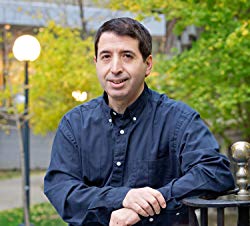We don’t usually hear too many good things about comets and asteroids. They’re often mentioned as potential earth-destroyers. We suspect that an impact from one of these cosmic bodies killed off the dinosaurs some 65 million years ago, and a future impact could spell our own doom. But U of T geologist James Brenan gives these marauders a much more positive spin: His research suggests these bodies could be responsible for enriching our planet with “precious metals” such as platinum, rhodium, and iridium. Although these metals may have existed in the earth’s crust when the planet formed, they’d have been stripped away by the intense heat, according to simulations carried out by Brenan and his colleagues. And so the heavy metals that we find in the crust today must have been added later – “likely by a ‘rain’ of extraterrestrial debris, such as comets and meteorites,” he says. Moreover, he speculates that the elements needed for life, including carbon and phosphorus, may have arrived in a similar fashion.
Brenan’s findings are new, but I can’t help thinking of Carl Sagan’s famous phrase: “We are star stuff.” He was referring to the role of supernovas in spreading the heavier elements throughout the galaxy. Now it seems that the link between the celestial and the terrestrial – between heaven and earth, so to speak – is even stronger than Sagan had imagined.
Recent Posts
U of T’s 197th Birthday Quiz
Test your knowledge of all things U of T in honour of the university’s 197th anniversary on March 15!
Are Cold Plunges Good for You?
Research suggests they are, in three ways
Work Has Changed. So Have the Qualities of Good Leadership
Rapid shifts in everything from technology to employee expectations are pressuring leaders to constantly adapt





